How to lose a mountain: the peaks and pitfalls of exploration, near and far
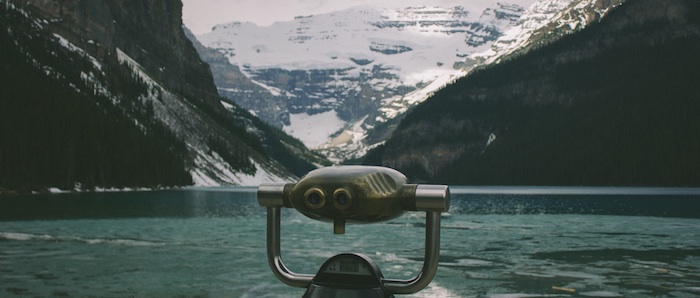
It was called the Plain of Six Glaciers, which sounded like something in a Tolkien novel, what with his Battle of the Five Armies, or the Cracks of Doom, or, like, the entire Silmarillion. I stared up into the mountains at the supposed location of the mythical plain. The distant plateau was hidden by peaks and the sunlight shone from behind them.
I was in Alberta in the fall of 2012 for a two-week fiction-writing residency at the Banff Centre for Arts and Creativity. It was a place where artists could develop their craft with mentors and peers. Every day, I had lunch in the cafeteria with other writers, and also with poets, composers and pianists. And, of course, I wrote and rewrote a project I was reviewing with my mentor.
Midway through the two-week residency, a group of us from the writing program planned to head up to Lake Louise, about an hour north of Banff. We piled into a chartered old school bus suited only for children. Tiny, tiny children. Was I ever that small? My adult legs couldn’t fit in those seats unless I sat like a 90-year-old man in a fishing village who complained about the catch. But like a schoolboy, I remembered the different types of triangles, and noticed, as I squeezed into those seats, that my legs formed an obtuse angle. That didn’t help the soreness from a small hike I’d done two days before beside the Banff Centre.
We arrived at Lake Louise, where one of the grand old railway hotels still stood. It was a bright and sunny day, though at ten in the morning, it was not quite ten degrees Celsius. It was the end of September, and the winter snows would come soon and, when they did, the path up into the mountains would be closed until the following spring. I stared up past the turquoise water of the lake, daunted by the mountain range behind it.
Others in the Banff group were readying for the hike, but I said I would be content walking around the lake like a mere tourist. I wrapped a scarf around my neck to look like a 1920s aviator; I only wanted to look like I could have an adventure. The walk around the lake would take 30 or 40 minutes, and I would turn back at the trailhead leading up into the mountains. I wanted to sit by the turquoise lake with a hot chocolate and a book.
I walked with some of the other writers in the residency, a gaggle of maybe a dozen of us, some more determined than others. I was at the rear of the pack with two others, and we talked about writing and literature and inspiration, the kind of thing I presumed Hemingway did between trout fishing and an afternoon bullfight. We talked and walked and it seemed like the best thing to do would be to keep doing that, to be a writer in the world with other writers, no matter where my footsteps led.
We arrived at the trailhead. The trail snuck into the wilderness, and the pavement gave way to trampled, brown grass and scattered branches and the occasional pile of caribou dung. The rise into the mountains was subtle, deceptive. The wilderness and the conversation both slowly tricked me into walking further away from the lake. As we hiked, we talked less and breathed more, and negotiated the trail’s twists and curves, the rocks and the fallen trunks, the mud and the mountain ice. There was a thought of heading up to a place called the Teahouse, which wasn’t quite as far up as the Plain of Six Glaciers or the dwarven army I assumed lived up there. Besides, a spot of tea among the mountains sounded delightful. We were already well on our way, and the trail up to the Teahouse was only be 5.5 km from the trailhead. I couldn’t tell how far we’d gone or how much further we had left, so I kept walking.
The pack ahead had disappeared from sight, up the trail. My two conversation partners, meanwhile, turned around one after the other, the first from asthma, and the other from a sore knee. They were fine but tired, and encouraged me to keep going. I said I had nothing to prove, but I realized I suddenly did—or rather, that I wanted to continue the hike. The hike had become epic and manly and beautiful, so I kept walking. Winding through the boreal forests, over the fresh or dried patties of caribou dung, across uneven rocks and the drip of melting ice, along trails where I tiptoed like a mountain goat by the edges of ravines, I could only keep going. The air was fresh, as if newborn, not old in the world. And though I needed that air, my muscles seemed not to ache. The sun rose overhead, warming me, and I was proud. And with fit young parents dragging their mewling toddlers up the mountain, stopping seemed bad form.
I arrived at the Teahouse around 1:00 or 1:30, three hours after departing from the Château Lake Louise. The plateau was covered in conifers older than me, and the Teahouse was little more than an old mountain shack with percolators and half-empty bags of Tostitos. It was all they had left then, at the end of September, and they were closing up shop for the season, before the mountain trails disappeared under the snowfall. Other hikers milled about eating granola bars and taking pictures next to trees the size of high rises.
I was tempted to go on up to the Plain of Six Glaciers. I had made it that far, and another 1.5 km to the plain seemed nothing, and probably Gandalf would be there smiting the Balrog’s ruin on the mountainside. I had to see that. The problem, though, was time. My trek up had been steady but slow, and I had to turn around if I wanted to catch the afternoon bus back to Banff. I stayed at the Teahouse for all of five minutes.
The descent was a lot faster than I expected, and easier, and therefore more enjoyable. Motion on the trail was so pure a thing, only muscle and breath, no spectre of thoughts or emails or pop culture. All the way down, I had a view of the moraine valley carved by the now-receding glacier that poured into Lake Louise. With my Joseph Aboud scarf around my neck, with the blood pumping through my arteries giving my masculine body life, with the brilliant sun above, I was euphoric.
Exhausted but still breathing (heavily), I arrived at the Château Lake Louise around 3:00, having completed the 12 km roundtrip unexpectedly early. I felt that tremble in my muscles that’s both scary and exhilarating: “What’s happening to me…and why the hell doesn’t it happen to me more often?” I was famished. I had just enough time to meet up with others in the group and have a fantastic, massive burger at the overpriced restaurant-bar in the bowels of the hotel. Sweet potato fries. A tall glass of Coke. A few blissful moments of European football on the big screen before they switched it to American football. Trembling.
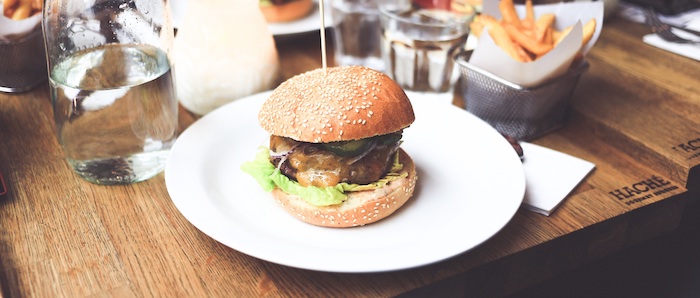
I idealized Banff as a nexus more connected to nature, a place that was closer to the truth of the universe. It was surrounded on all sides by monumental things: the mountains, the sky. It was also a pricey resort town, but I imagined they built an artist’s campus there for a reason. I told myself that, like Himalayan monks, we retreated to the mountains to immerse ourselves in what mattered most. Being in the mountains allowed us to see that the urban, wired world we created for ourselves was off-kilter, a fallacy, maya.
When I returned to the urban, wired world of Toronto in October, I stopped eating sugary pastries and muffins for breakfast, and switched to smoothies, bran cereals, peanut-butter sandwiches, and oatmeal. Every morning throughout the winter, I did burpees. By the spring I’d lost almost fifteen pounds, and I decided it was warm enough outside to start jogging. I read books about alpinists and about disasters on Everest. And I set up an ambitious goal for myself: I wanted to hike Mount Kilimanjaro the following year once I was fit enough.
I’d never been fit. As a child, into my teens and even into my twenties, I’d always been underweight. It was only when I became an office worker that I gained the spare tire that is the hallmark of the urban, white-collar class. But after Banff? After all the burpees? No. I wanted to be far away. I wanted to meet Nepali monks in the shadows of Annapurna. I wanted to have a single-digit body-fat percentage and thighs like Corinthian columns, and I was on my way. After months of burpees, my calves were starting to look like they had butt implants. I felt stronger than I had in a long time, and I wanted to get even stronger.
Then in the summer came Ramadan, and I had to take a break from exercise for a few weeks so I could fast for the seventeen-hour July days. In the last ten days of Ramadan, the holiest and most blessed time of the Islamic calendar because it was when the Qur’an was first revealed, the veins in my brainstem burst.
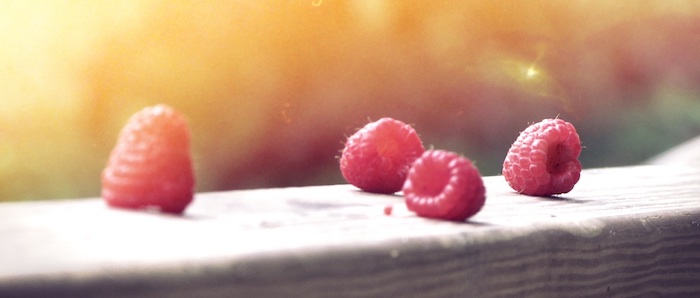
It’s an old story, this thing in my brain, and it happened before. The first time, in 2006, I was in my late twenties. One night, there was a terrifying headache like the birth of Athena, and in the morning I was different. Nobody knew what had happened to me, but my body had changed. My body didn’t work. I’d lost control.
The hospital doctors told me I’d had a hemorrhage in my brain. They told me there was a clump of blood vessels shaped like a raspberry inside my medulla oblongata, the primitive part of the brain that tells the body how to do autonomic functions like breathing. A normal brain’s vessels there might look like a pack of straws, all carrying blood through the pipework without fail. My vessels were more like a sponge, full of pockets and holes. Blood didn’t flow through it as through plumbing. My sponge swelled and leaked, and when it did that it could kill me.
Somehow it didn’t. I didn’t do anything to survive, and they didn’t cut me open. They didn’t want to, because it’s not possible to surgically turn a sponge into a pack of straws, and any attempt would have left me infirm for life. They chose instead to let me heal on my own, which I was doing, but it’s a crazy thing to tell someone lying in a hospital bed with a hemorrhage in a part of the brain that controls their heartbeat, “You got this.”
I recovered, and not two months later I looked completely normal. There were small changes under the surface, yes, but no one would be able to tell by looking at me.
Seven years passed. Fast-forward past Banff and burpees and jogging, to the summer of 2013, to Ramadan and fasting, to the last ten days. One weekend, I felt a stinging behind my ear like a shard of glass winding its way through me. I suspected what it might be: a chunk of coagulated blood from another hemorrhage. When the headache came back, when I couldn’t hold myself up or walk straight, when I couldn’t swallow and when half my body felt packed in ice, I went back to the hospital. It had happened again.
I stopped doing burpees. I stopped jogging. I stopped thinking about mountains. The raspberry was eating me piece by piece. This time, it took away part of my balance forever. If I walk a certain way, no one notices. But when I move between the sink and the shower and the toilet, when I navigate around the island in the kitchen, I tip sideways and I have to catch myself every time. It hasn’t changed in three years, even after the initial physiotherapy. Part of me is gone and I won’t ever get it back.
Whatever there is of me now is the whole thing. I’m completely here, I’m whole, and that’s a beautiful thing.
But Kilimanjaro. Oh, Kilimanjaro…
Up there, even fit people can suffer from altitude sickness, that crippling and mind-altering state that occurs when there’s too little oxygen in the air to feed the brain. Even fit lungs tear, and even healthy brains bleed. I simply can’t take that risk.
So, I’m left dreaming of lost mountains.

I had another minor episode in the summer of 2016 because I lifted too many bags of rice and flour, too many bottles of cooking oil, too many boxes of dates at a Ramadan food drive. I was fasting and I was doing my duty as a Muslim, living my values, but my body did not like such exertions. For nearly two months after that day of volunteering, I spent hours lying in bed, woozy, aching, miserable, and unsure about what to do other than let my body heal itself. It did heal itself, but my doctor told me that, in the future, I’ll have to find some other way besides fasting to honour my beliefs during Ramadan. I can’t subject it to such deprivation.
It takes so little to remind me of my body’s limits, but I’m trying to expand those limits however I can. I’ve started exercising again, but more carefully, less strenuously. It’s very non-cinematic drudgery, a day-by-day effort to become stronger, one that doesn’t feel worthy of a story. It’s not satisfying to say that the mountain isn’t out there, but that it’s inside me, that I have some inner summit to conquer. Yes, yes, that’s also true, but, no, that’s not what I’m talking about. I’m talking about Kilimanjaro. I want it and I can’t have it and I’m angry and I want to be angry, so shut up. There’s no romance in squats. It’s not heroic. It’s not a National Geographic photo-essay. It’s only a response to faulty plumbing. It’s only—
Sigh.
That sustained and unglamorous effort is what defines character, heroic or not. We are dealt a hand, and what we do with the cards is up to us. And it’s not even that big of a deal, this so-called hand I’ve been dealt. So what if exercising is not “heroic”? Why does it have to be? I get so wrapped up in my melodrama that I can hardly stand myself.
But, fine, sometimes we have to take what we can get. My closest wilderness is the suburbs. There’s plentiful vegetation around here, and parks, and grass. There’s a stream nearby where frogs croak, and it leads to a storm overflow pond where ducks swim and geese bathe during a stopover on their trip to somewhere warmer or cooler than here.
And shovelling season is around the corner. I mean, I wanted to go to the snow-capped Himalayas, right? Isn’t singing “Heigh-Ho” while shovelling at, like, seven in the morning (every morning) kind of the same as digging yourself out of an avalanche in the Western Cwm? I get layered up, I put on my hiking boots and two layers of socks, and I dive with gusto into a layer of snow that feels like a full diaper. So, yeah, sure, that’s the same! I’m doing it! I’m really doing it! Now, go ahead, scrape that windshield! It’s exactly like using an ice axe on the seracs of the Khumbu Icefall! Yes!
Grumble, grumble, rassem-frassem…
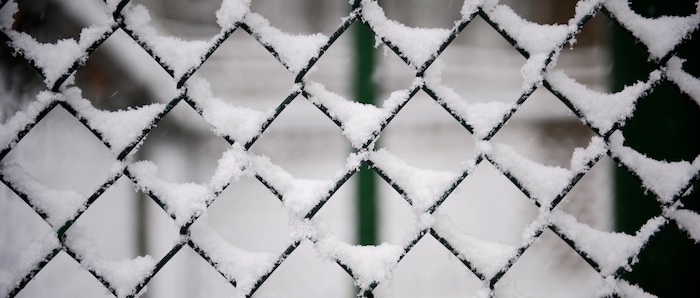
I went for a walk one day this summer while I was recovering from my episode. My usual route took me over bike paths that weave through our neighbourhood and open up into ravines and streams and small forests full of songbirds. As I walked around a bend, the backyard hedges beside the trail fell away and revealed, in the distance, an enormous weeping willow tree. It must have been a literal hundred feet tall. I’d seen it many times before. It couldn’t have been more ordinary, something I’d ignored in the same way I ignore the colour of paint on walls. It faded into the background. It was the background. It looked like a giant, upside-down mop, and I just… I don’t notice mops. I’m sorry. And don’t give me that crap about mindfulness. Not about mops. Just… No.
Somehow on that sunny day, though, the sight of the weeping willow hit me like an ecstatic epiphany. Epiphany: “a manifestation of a divine or supernatural being; a moment of sudden revelation or insight.” I was a suburban shaman seeing into the spirit world, an initiate who’d spent years living in the caves now witnessing the sunrise for the first time. Something about that tree was… I was going to say “alive”, as if that wasn’t redundant. As it swayed in the breeze and shone under the sun, it radiated like magnetic north. I laughed and raised my arms—a victory pose. I suddenly understood what hunter-gatherer animists saw in the everyday world around them, and how humanity became spiritual.
And there I go again making everything grandiose and mythological. It’s a walk, not the Burning Bush. And, sure, maybe I’m halfway perpetuating the colonialist idea of the noble savage and the exotic land and all that. But at the most basic level, I do wonder how I can connect to that primal sensation of awe that unsettles and inspires me, that makes me
stop.
How and where do I experience again what I felt during that hike up to the Plain of Six Glaciers? Because I still dream of visiting monks in the Himalayas, or hiking through the Rift Valley and tripping on the undiscovered jawbone of some million-year-old ancestor, or finally making it all the way up to those six glaciers and fighting Gandalf, that bearded old bastard. When I look outside, though, the November sun goes down at five o’clock, and the darkness is uninviting, and the cold makes me want to curl up to my warm, cozy PlayStation 4, and—
Bah, forget it. I’ve talked too much. I’m going out for a walk before night falls. Maybe I’ll turn into a wolf and howl at the moon or something.
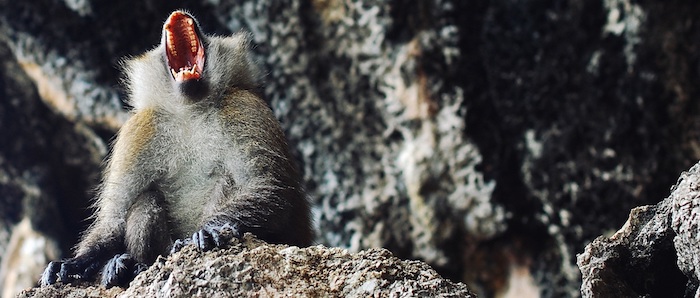
(Photos by: Dustin Groh, quentin lagache, Ben Moore, Superfamous, Lance Anderson, Asa Rodger)
(This post also appears on Medium.)